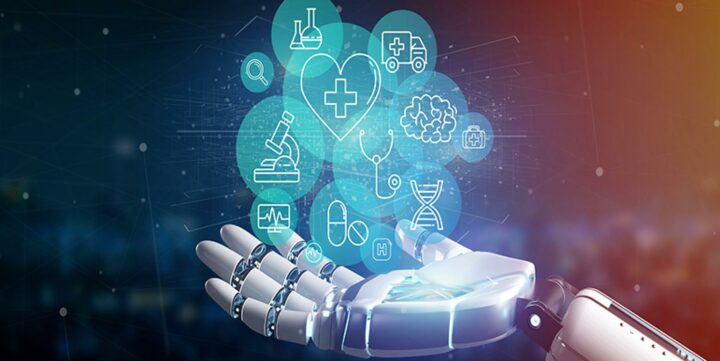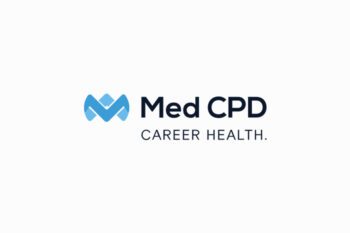AI Begins To Disrupt Healthcare
February 14, 2023
A Long History of AI in Healthcare
Artificial intelligence (AI) is not particularly new to medicine, but is evolving and changing our approach to health at a rapid pace. With ongoing progress in data sharing, machine learning and digital infrastructure, we are seeing the expansion of AI into analytical realms we only thought possible of human experts. From the 1990s we have witnessed AI play a crucial part in automated interpretation of ECGs, and now seeing these advanced transcend radiology, ophthalmology, dermatology, pathology, and beyond.
Always seen as a promising area of AI expertise, medicine holds the need for detailed clinical support systems. AI has been primarily rule-based in its application to interpret ECGs, diagnose disease, choose appropriate treatments, and assist in diagnostic hypotheses of complex patients. At times, these rule-based systems can be inflexible and rigid, often refuting any level of tolerance let alone outliers. Machine-learning algorithms on the contrary are robust and leveraged to account for complex interactions, identifying deep patterns in data sets. These methods of intelligence boast the ability to problem solve and acquire understanding, building precision and reliability with expanding data.
These deep learning capabilities of AI involve training an artificial neural network, comprised of layers of datasets, often holding between tens of millions to hundreds of millions of parameters – made almost entirely possible by advances in computer-processors over the last decade. Currently, automated medical-image diagnosis is arguably the most precise and successful domain of medical AI applications, with growing use in a range of fields.
Radiology
Due to the large data sets available to radiology, it poses the perfect field for deep-learning techniques to assist in arriving at the correct diagnosis with confidence. Already clinicians use archival images and systems to train and develop neural networks, looking for clinical patterns of outcomes. Since the late 1900s, machine-learning AI has assisted to detect lung nodules using tomography images, diagnosing tuberculosis with chest radiography and identifying breast-masses in mammography scans. These systems are made more accurate through transfer learning whereby deep-neural systems are built with a non-medical data pool, and reconfigured to assess biomedical images with extraordinary accuracy. This is particularly evidenced in diagnosing cardiovascular (CV) complications via MRI, a process approved with diagnosing capabilities by the US Food and Drug Association (FDA) in 2018.
Dermatology
As with complex CV imaging, AI can also play a vital role in routine dermatological assessment, most recently playing a significant role in the diagnosis of skin melanoma. These lesions are assessed using the ABCDE rule as we know; whereby criterion A refers to asymmetry of the lesion, B to irregular borders, C to colour variegation, D to diameter ≥6mm, and E to the enlargement or evolution of the lesion. AI imaging alone can assess 4 out of 5 of these markers, with E able to be determined through multiple pictures. Recently, neural networks trained on 129,450 clinical images achieved dermatologist-level accuracy in successfully diagnosing skin lesion malignancy, in fact, out performing the average dermatologist – whilst providing a inexpensive tool to utilise in a training format. Globally, these automated systems provide secondary nets to catch discrepancies in diagnoses and assist in expanding the clinical potential of AI’s human counterparts.
Ophthalmology
A recent example of the use of AI in the field of ophthalmology is through Aravind Eye Care System (AECS) of India. In the area of diabetic care, we know that poor glycaemic control can unfortunately lead to diabetic retinopathy and changes to vision, affecting more than 90 million people worldwide as the leading cause of blindness in adults. AECS uses AI to test and deploy an automated image classification system to screen millions of retinal photographs of diabetic patients. Through their collaboration with a team of researchers at Google Inc. they used deep-learning capabilities to train AI through an extensive catalogue of fundus photographs to achieve physician-level sensitivity and specificity when diagnosing and monitoring the development of diabetic retinopathy. These systems are unparalleled and have been found to be able to identify previously unrecognisable associations between image patterns and the fundus images. This is another example of AI approved by the FDA and adopted worldwide for detecting moderate-to-severe disease.
Pathology
As mentioned, AI has the ability to play an unprecedented role in skin melanoma assessment and detection. Histopathological assessments prove the gold standard for many of these lesions, and routinely performed through a biopsy or surgical excision. This process is not simply scalable and relies on extensive human technique. Moreover, pathologies barely noticeable by the human eye are commonly missed, causing these histopathology slides to remain underutilised. Through AI’s use of deep convolutional neural networks, there are promising advances in the specificity of these screening tools and further greater outcomes for patients across a broad range of pathologies and complex lesions including through early detection of breast cancers and prostate cancers.
The Future of AI
This collaboration between clinicians and artificial intelligence is not one simple methodology, but a culmination of technologies, expansive pools of data, and human expertise to achieve the best results. Overall the successful applications of AI in medicine prove incredibly promising for the future of disease detection and treatment, with prospects of reducing the burden of health for many conditions treated effectively through early detection. The control and certification of AI in diagnostic tools is a process yet to be determined, but harnessing the power of AI in the future of healthcare serves to advance physician capabilities dramatically over the next decade and beyond.
Jiang, et al (2017). Artificial intelligence in healthcare: past, present and future. Stroke and Vascular Neurology, 2(4), pp.230– 243. doi:https://doi.org/10.1136/svn-2017-000101.
Yu, et al (2020). Artificial Intelligence in healthcare. Nature – Biomedical Engineering, 10(11), https://doi.org/10.1038/s41551- 018-0305-z












